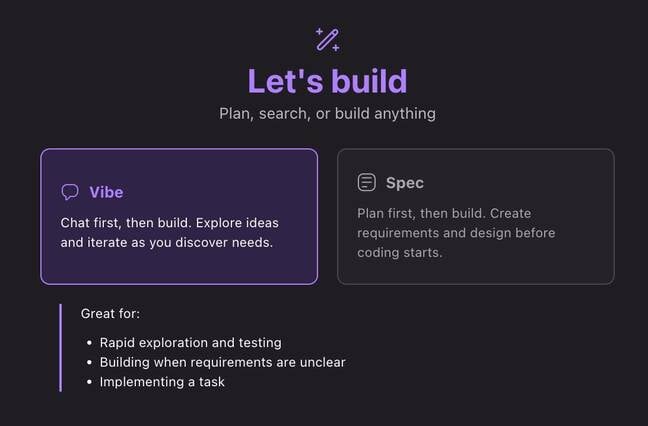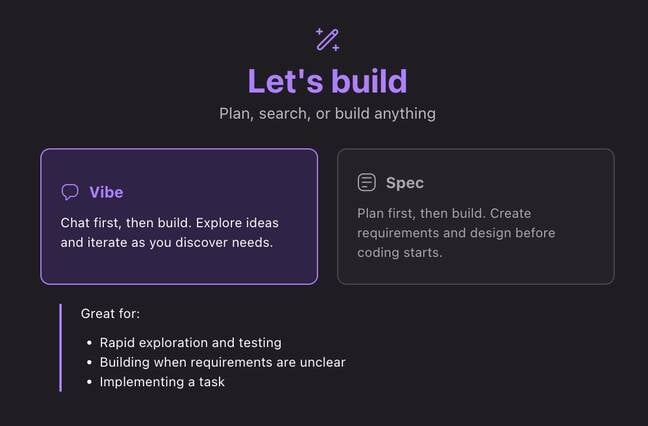AWS has introduced daily usage limits and a user waitlist for Kiro, its preview spec-driven AI editor, citing unexpectedly high demand as it works to scale the system.
Kiro developer experience engineer Jay Raval said on the official Discord channel that “we’ve introduced some temporary measures – including a waitlist for new users and daily usage limits for existing users.” He added that “we’re not sharing specific limits yet” and that the limits are temporary while the team works on scaling and other improvements. The restrictions follow an increasing number of complaints regarding slow performance, suggesting that the infrastructure put in place for the preview has proved insufficient.

Let’s build … but not yet: The welcome screen for the AWS Kiro AI editor
Existing users are being asked to wait before installing it on a second PC, and at least one fake download site has appeared. The correct site is https://kiro.dev.
At the end of last week, an update delivered improved prompt caching and better error messages, informing developers when they had hit the new daily limit, to the irritation of some. “I didn’t have these limits the 1st 4 days of my project … now I am restricted,” said one, frustrated that there is no option to pay for more AI tokens.
When we first looked at Kiro, there were free, Pro, and Pro+ plans described on the official site, but these have now disappeared. The site now states that “updated pricing details for different tiers will be shared soon.”
Kiro is free in preview, which is part of the appeal, but there is evidence that its spec-driven approach resonates with developers. “Well this is awkward. AWS released a Cursor clone and it’s … actually not terrible,” said Duckbill cloud analyst Corey Quinn on X.
The Kiro editor is based on a fork of Code OSS, the same code used as the base of Microsoft’s Visual Studio Code, and the LLMs (large language models) on offer are currently Anthropic’s Claude Sonnet 3.7 or 4.0. Although an AWS product, it has been developed as “slightly separated from the rest of core AWS,” said developer advocate for AI, Nathan Peck. It does not require an AWS account, and does not steer developers automatically towards AWS services, at least in the current preview.
The distinctive feature of Kiro is “spec mode” where the initial prompt for building an application does not create any code, but generates markdown files for requirements, a proposed design including tech stack, and step-by-step tasks for implementation.
We tried a quick hands-on with Kiro and got useful results that could plausibly be presented to a customer as a project plan. We tried exactly the same initial prompt with Google’s Firebase Studio and got a working prototype, but it was much less complete and hooked to Google’s platform.
Not everyone is having a great experience. “Tried to use this to create a minimal bootloader and kernel that prints hello world in x86. There was never a point in which it successfully did anything,” said a Hacker News comment – though perhaps this is not the type of project Kiro is designed for.
Kiro is subject to the same limitations and caveats as other agentic AI coding tools, including errors and security issues. It is a risky tool in the hands of anyone who does not understand the code it generates.
That said, the document-driven approach does help. “It’s surprisingly good from an angle of ‘does a lot of the context engineering work for you.’ It enforces a rigor that I don’t usually bring to vibe coding” said Quinn.
RedMonk analyst James Governor predicted that Kiro would be “one of the company’s fastest growing products ever … the most successful developer launch from AWS we’ve seen in a long time.”
The oddity here is that part of Kiro’s appeal is that it does not presume use of the AWS platform, at least not yet. Like the pricing and usage limits, we expect this to be subject to change. ®
